|
Today we celebrate the Solemnity of the Immaculate Conception. In celebrating this feast, we confess that: “The most Blessed Virgin Mary was, from the first moment of her conception, by a singular grace and privilege of almighty God and by virtue of the merits of Jesus Christ, Saviour of the human race, preserved immune from all stain of original sin” (Catechism of the Catholic Church, 491). That is to say: Mary, in a unique way, was free of original sin, so that, unburdened by the fear, confusion, and selfishness that accompany sin, she could give her “yes” with absolute freedom when asked to bear the Son of God. The Prayer over the Offerings at today’s Mass describes this teaching beautifully by saying, “We profess [Mary], on account of [God’s] prevenient grace, to be untouched by any stain of sin, so, through her intercession, we may be delivered from all our faults.” While “prevenient grace” is a bit of an unusual term, and not one most of us learn in religious education classes, it gets at the heart of what we celebrate on this our patronal feast day for the United States of America. The “prevenient grace” Mary receives is a grace given in anticipation of the extraordinary role she would play in salvation history as the Mother of God, but it also shows her ordinary human nature. Mary is not divine; like the rest of humanity, she too needs God’s grace and redemption through Christ’s saving actions. We might consider the following analogy which is often referenced in explanation of this teaching. Suppose a man falls into a deep and muddy pit, and someone reaches down to pull him out. The man has been “saved” from the pit but hasn’t escaped the mud stains he got from falling into it. Now imagine a woman walking along about to tumble into the pit herself, but just as she is about to fall in, someone holds her back and stops her from falling in. She too has been “saved”—not only from falling into the pit, but also from getting stained by the mud in the first place. While we receive God’s grace when we are cleansed of original sin in the waters of Baptism, Mary was kept free from the stain of original sin from the first moment of her existence. We are all saved by the same sacrifice of Jesus on the cross; Mary, however, was given this gift at a different point in time. The Catechism goes on to describe how this gift of grace was necessary for Mary’s unique vocation: “To become the mother of the Saviour, Mary ‘was enriched by God with gifts appropriate to such a role.’ The angel Gabriel at the moment of the annunciation salutes her as ‘full of grace.’ In fact, in order for Mary to be able to give the free assent of her faith to the announcement of her vocation, it was necessary that she be wholly borne by God's grace (Catechism of the Catholic Church, 490). Just as Mary had to be given the grace she needed to respond to her vocation, we too must rely on the grace of God to answer God’s unique call for us. It is fitting that we celebrate this feast within the season of Advent. We may well take advantage of this holy season and all it offers to open ourselves evermore to the gifts God wishes to bestow on us, so that we too can bring Christ’s presence to a world very much in need of it. Mary was able to devote herself to God’s will “wholeheartedly, without a single sin to restrain her, she gave herself entirely to the person and to the work of her Son…by God's grace” (Catechism of the Catholic Church, 494). We too can find ourselves more attuned to God’s will after seeking out the forgiveness of our sins through the Sacrament of Reconciliation, which is offered more frequently during this season of Advent. We can pause during this season of preparation and reflect on the following: How am I responding to my unique God-given vocation? How can I cooperate more freely with God’s will? How am I being called to make Christ present here and now? How can I cultivate a greater reliance on God’s grace? As we joyfully await the coming of Christ, may Mary, “full of grace,” loving mother, and model of holiness, intercede for us!
0 Comments
For the past 145 years on the Feast of Our Lady of Mt. Carmel (16th of July) in my hometown of Hammonton, New Jersey, there is a procession through the streets of the statues of various saints that usually reside inside the local parish church. The faithful who are devoted to each saint distribute prayer cards of their patron as they process with the statues through the streets – St. Joseph, St. Anne, St. Anthony, St. Rita, St. Jude, St. Rocco, St. Lucy, St. Vincent Pallotti, and so forth. The Blessed Mother, while at the end under the title of Our Lady of Mt. Carmel, appears also in the procession under various names – Milagrosa, Nuestra Señora de Guadalupe, Our Lady of the Assumption, and the Immaculate Conception, whose Solemnity we celebrate today.
Sometimes, these various titles and ways of representing the Blessed Mother can be confusing for some of those who line the streets of the procession route. My mother, Angela, who has been part of the procession for over 50 years, makes a float with a large Rosary and a statue of the Blessed Mother under the title of the Immaculate Conception on it, although some would call the statue “Our Lady of Grace.” The statue, which is over 100 years old, is patterned after the image on the “Miraculous Medal,” around which is inscribed the words, “O Mary, conceived without sin, pray for us who have recourse to thee.” Since many who come to the procession are not necessarily practicing Catholics, my mother always offers a form of “street evangelization” to those who come to her float to receive a prayer folder that provides instructions on how to say the Rosary. Since the statue of the Immaculate Conception is on a special float, many will come and ask if it is of Our Lady of Mt. Carmel. Sometimes, my mother is asked what the difference is between the Immaculate Conception and Our Lady of Mt. Carmel. She responds cheerfully, “Same Lady, different dress.” My mother then goes on to explain why the Blessed Mother has so many titles. She also assists these curious onlookers in understanding how Mary offers us the greatest example of how to follow Jesus as his disciple. She helps them learn that Mary was prepared from the time of her conception in the womb of her mother, St. Anne, to receive Jesus and did so throughout her life. We, too, are meant to be prepared to receive Jesus into our lives in an ongoing way, especially during the Advent season. We have not been conceived without sin, but we have been washed clean of Original Sin at Baptism (and all prior sin, if one was baptized as an adult). While we have all sinned since that time, our Baptism offers us a share in the mission of Jesus Christ as Priest, Prophet, and King. Though followers or disciples, he also sends us as apostles, or as missionary disciples, out into our challenging world to witness to him by what we say and do. The Blessed Virgin Mary offers us the best example of how to follow Jesus Christ. No matter what title of hers might appeal to us spiritually, she is always “same Lady, different dress.” She was the same in her following of Jesus during her life and continues from her heavenly home to invite us to follow her Son, Jesus Christ, Our Savior and Lord. O Mary, conceived without sin, pray for us who have recourse to thee! The Catholic Apostolate Center is a ministry of the Immaculate Conception Province of the Society of the Catholic Apostolate (Pallottine Fathers and Brothers). The Pallottines and the Center staff will remember you in special prayer on this Solemnity of the Immaculate Conception.
We have entered the season of Advent and a new liturgical year. Advent offers us an important time for us to watch, wait, and reflect on the coming of Jesus Christ, on our encounter with him. He is encountered in the mystery of the Incarnation, which we represent by Nativity scenes placed in our churches, chapels, and homes. We can stop at the beauty of the artistic scene and not move ourselves into deeper reflection on the fact that God, who is infinite love and mercy, sent his only begotten Son to save us.
Christ is also encountered in the Eucharist, most significantly during the celebration of the Mass. Pope Francis describes this coming of Jesus: “Mass is prayer; rather, it is prayer par excellence, the loftiest, the most sublime, and at the same time the most ‘concrete’. In fact, it is the loving encounter with God through his Word and the Body and Blood of Jesus. It is an encounter with the Lord.” (General Audience, November 15, 2017). And Christ will come again in all his glory at the end of time. We need to be prepared for this time not simply through passive waiting, but by active watching for the Lord and encountering him in our brothers and sisters who are most in need, especially the poor, the vulnerable, and the voiceless (Mt. 25:31-46). As baptized members of the Body of Christ, we are co-responsible for the mission that he left us until he comes again – for the salvation of souls – not only focusing on eternal life with God, but also on how we are collaborating with the Most Holy Trinity to build the Kingdom of God on this side of life. Pope Francis reminds us of the connection of the Immaculate Conception to the salvific plan of God. “In the Immaculate Conception of Mary we are invited to recognize the dawn of the new world, transformed by the salvific work of the Father and of the Son and of the Holy Spirit. The dawn of the new creation brought about by divine mercy. For this reason, the Virgin Mary, never infected by sin and always full of God, is the mother of a new humanity. She is the mother of the recreated world.” (Homily for the Solemnity of the Immaculate Conception, 2015) We have not been conceived without sin, but we have been washed clean of Original Sin at Baptism (and all prior sin, if one was baptized as an adult). While we have all sinned since that time, our Baptism offers us a share in the mission of Jesus Christ as Priest, Prophet, and King. Though followers or disciples, he also sends us as apostles, or as missionary disciples, out into our challenging world to witness to him by what we say and do. That is why we are told at the end of each Mass to “Go”. We are sent on mission by Christ and the Church as joyful witnesses of God’s love and mercy. Our best example of how to be a missionary disciple of Jesus Christ is the Blessed Virgin Mary. She followed Jesus as his disciple unfailingly during her life and continues from her heavenly home as Queen of Apostles to invite us to encounter her Son, Jesus Christ, Our Savior and Lord. May the Charity of Christ urge us on! The Catholic Apostolate Center is a ministry of the Immaculate Conception Province of the Society of the Catholic Apostolate (Pallottine Fathers and Brothers). The Pallottines and the Center staff will remember you in special prayer on this Solemnity of the Immaculate Conception. Have you ever wondered why the Church decided to celebrate Mary, as Mother of God, on the first day of each calendar year? After all, we’re still in the midst of Christmas! Isn’t this season already busy and full of Feast Days and devotions? Before she could be revealed as the Immaculate Conception, or celebrated as Our Lady of Fatima, Lourdes, or Guadalupe, or even honored as Lady Poverty by St. Francis, Mary first had to accept God’s will for her in salvation history in order to become the mother of the savior who was born on Christmas Day.
In St. Luke’s Gospel, Mary is first hailed as God’s “favored one!” If this title, bestowed by the Almighty’s messenger, wasn’t honor enough, Mary would later receive the even greater title of “Mother of God.” Her cousin St. Elizabeth would confer this title upon her with the words, “the mother of my Lord.” First, of course, Mary had to agree to what God asked of her! Mary may not have understood just how great the decision was that she made, but, despite her youth, she nevertheless had the great gift of faith in God. Because of her infinite trust in God and her famed fiat, we can definitively venerate Mary, the Mother of God, and ask for her intercession. Mary fulfills a unique role in the Mystery of Christ and the Church. Hailed as Theotokos (literally, “God Bearer”) by the Church in 431 at the First Council of Ephesus, Mary’s title reflects not only her role in salvation history, but also asserts the divinity of Christ. Just as the moon does not bear its own light but instead reflects the light from the sun, Mary entirely reflects the brilliance and grace of God. While a universal celebration on October 11 of the feast of the “Maternity of the Blessed Virgin Mary” was not declared by the Church until 1931 by Pope Pius XI, history records similar celebrations as part of the Christmas octave as early as the 13th or 14th century in Rome and Spain. Later celebrations developed in the 18th century in Portugal, Brazil, and Algeria and continued to take root around the world. After this great feast was finally moved to the first day of January by Pope St. John XXIII (in his 1960 revision of the liturgical calendar and rites), the Church would, at the Council Second Vatican, reaffirm Mary’s place in the Church Universal: Redeemed by reason of the merits of her Son and united to Him by a close and indissoluble tie, she is endowed with the high office and dignity of being the Mother of the Son of God, by which account she is also the beloved daughter of the Father and the temple of the Holy Spirit. Because of this gift of sublime grace she far surpasses all creatures, both in heaven and on earth. At the same time, however, because she belongs to the offspring of Adam she is one with all those who are to be saved. She is “the mother of the members of Christ... having cooperated by charity that faithful might be born in the Church, who are members of that Head.”… The Catholic Church, taught by the Holy Spirit, honors her with filial affection and piety as a most beloved mother. Even more recently, Pope Francis reflected upon why Mary is thus honored as the Mother of God and not just the Mother of Jesus: From the moment that our Lord became incarnate in Mary, and for all time, he took on our humanity. There is no longer God without man; the flesh Jesus took from his Mother is our own, now and for all eternity. To call Mary the Mother of God reminds us of this: God is close to humanity, even as a child is close to the mother who bears him in her womb. As we continue our celebration of Christmas, let us consider how, in His mother, God the Son was made Incarnate not only to be with us, but also to be like us! The Blessed Mother, seen in every nativity scene, faithfully watches over the infant in the manger as the Mother of God and also as mother to each of us! She does so with great love, silently in her heart (cf. Luke 2:51). In Mary we find what really matters—not only during the Christmas season, but in the whole of the Christian life. As her children, may we look upon Mary with love and faithfully call upon her intercession with great affection. We have entered the season of Advent and a new liturgical year. Advent offers us an important time to watch, wait, and reflect on the coming of Jesus Christ and on our encounter with him. He is encountered in the mystery of the Incarnation, which we represent by Nativity scenes placed in our churches, chapels, and homes. We could limit ourselves to only looking at the beauty of the artistic scene and not move into deeper reflection on the fact that God, who is infinite love and mercy, sent his only begotten Son to save us.
Christ is also encountered in the Eucharist, most significantly during the celebration of the Mass. Pope Francis describes this coming of Jesus: “Mass is prayer; rather, it is prayer par excellence, the loftiest, the most sublime, and at the same time the most ‘concrete’. In fact, it is the loving encounter with God through his Word and the Body and Blood of Jesus. It is an encounter with the Lord.” (General Audience, November 15, 2017). And Christ will come again in all his glory at the end of time. We need to be prepared for this time not simply through passive waiting, but by active watching for the Lord and encountering him in our brothers and sisters who are most in need, especially the poor, the vulnerable, and the voiceless (Mt. 25:31-46). As baptized members of the Body of Christ, we are co-responsible for the mission that he left us until he comes again – for the salvation of souls – not only focusing on eternal life with God, but also on how we are collaborating with the Most Holy Trinity to build the Kingdom of God on this side of life. Pope Francis also reminds us of the connection of the Immaculate Conception to the salvific plan of God. “In the Immaculate Conception of Mary we are invited to recognize the dawn of the new world, transformed by the salvific work of the Father and of the Son and of the Holy Spirit. The dawn of the new creation brought about by divine mercy. For this reason, the Virgin Mary, never infected by sin and always full of God, is the mother of a new humanity. She is the mother of the recreated world.” (Homily for the Solemnity of the Immaculate Conception, 2015) We have not been conceived without sin, but we have been washed clean of Original Sin at Baptism (and all prior sin, if one was baptized as an adult). While we have all sinned since that time, our Baptism offers us a share in the mission of Jesus Christ as Priest, Prophet, and King. Though followers or disciples, he also sends us as apostles, or as missionary disciples, out into our challenging world to witness to him by what we say and do. That is why we are told at the end of each Mass to “Go”. We are sent on mission by Christ and the Church as joyful witnesses of God’s love and mercy. Our best example of how to be a missionary disciple of Jesus Christ is the Blessed Virgin Mary. She followed Jesus as his disciple unfailingly during her life and continues from her heavenly home as Queen of Apostles to invite us to encounter her Son, Jesus Christ, Our Savior and Lord. May the Charity of Christ urge us on! The Catholic Apostolate Center is a ministry of the Immaculate Conception Province of the Society of the Catholic Apostolate (Pallottine Fathers and Brothers). The Pallottines and the Center staff will remember you in special prayer on this Solemnity of the Immaculate Conception. For the past 141 years on the Feast of Our Lady of Mt. Carmel (16th of July) in my hometown of Hammonton, New Jersey, there is a procession through the streets of the statues of various saints that usually reside inside the local parish church. The faithful who are devoted to each saint distribute prayer cards of their patron as they process with the statues through the streets – St. Joseph, St. Anne, St. Anthony, St. Rita, St. Jude, St. Rocco, St. Lucy, St. Vincent Pallotti, and so forth. The Blessed Mother, while at the end under the title of Our Lady of Mt. Carmel, appears also in the procession under various names – Milagrosa, Nuestra Señora de Guadalupe, Our Lady of the Assumption, and the Immaculate Conception, whose Solemnity we celebrate today. Sometimes, these various titles and ways of representing the Blessed Mother can be confusing for some of those who line the streets of the procession route. My mother, Angela, who has been part of the procession for over 50 years, makes a float with a large Rosary and a statue of the Blessed Mother under the title of the Immaculate Conception on it, although some would call the statue “Our Lady of Grace.” The statue, which is over 100 years old, is patterned after the image on the “Miraculous Medal,” around which is inscribed the words, “O Mary, conceived without sin, pray for us who have recourse to thee.” Since many who come to the procession are not necessarily practicing Catholics, my mother always offers a form of “street evangelization” to those who come to her float to receive a prayer folder that provides instructions on how to say the Rosary. Since the statue of the Immaculate Conception is on a special float, many will come and ask if it is of Our Lady of Mt. Carmel. Sometimes, my mother is asked what the difference is between the Immaculate Conception and Our Lady of Mt. Carmel. She responds cheerfully, “Same Lady, different dress.” My mother then goes on to explain why the Blessed Mother has so many titles. She also assists these curious onlookers in understanding how Mary offers us the greatest example of how to follow Jesus as his disciple. She helps them learn that Mary was prepared from the time of her conception in the womb of her mother, St. Anne, to receive Jesus and did so throughout her life. We, too, are meant to be prepared to receive Jesus into our lives in an ongoing way, especially during the Advent season. We have not been conceived without sin, but we have been washed clean of Original Sin at Baptism (and all prior sin, if one was baptized as an adult). While we have all sinned since that time, our Baptism offers us a share in the mission of Jesus Christ as Priest, Prophet, and King. Though followers or disciples, he also sends us as apostles, or as missionary disciples, out into our challenging world to witness to him by what we say and do. The Blessed Virgin Mary offers us the best example of how to follow Jesus Christ. No matter what title of hers might appeal to us spiritually, she is always “same Lady, different dress.” She was the same in her following of Jesus during her life and continues from her heavenly home to invite us to follow her Son, Jesus Christ, Our Savior and Lord. O Mary, conceived without sin, pray for us who have recourse to thee! The Catholic Apostolate Center is a ministry of the Immaculate Conception Province of the Society of the Catholic Apostolate (Pallottine Fathers and Brothers). The Pallottines and the Center staff will remember you in special prayer on this Solemnity of the Immaculate Conception.
“We declare, pronounce, and define that the doctrine which holds that the most Blessed Virgin Mary, in the first instance of her conception, by a singular grace and privilege granted by Almighty God, in view of the merits of Jesus Christ, the Savior of the human race, was preserved free from all stain of original sin, is a doctrine revealed by God and therefore to be believed firmly and constantly by all the faithful” (Pius IX. Ineffabilis Deus).
With these words, Pope Pius IX declared ex cathedra the doctrine of the Immaculate Conception; only twice in recent history has this occurred (the other being Pius XII’s declaration on the Assumption). For centuries, the faithful have commemorated the belief that Mary, from the moment of her conception, by a loving act of God, was free from sin. This, of course, does not mean that Mary was exempt in some way from Jesus’ redemption of humanity. Rather, as Blessed John Duns Scotus put it, she acquired the greatest of redemptions through her special role in Salvation History (Lectura III Sent., 119). Many who do not agree with the doctrine argue that if Mary was not born with Original Sin or did not sin at any point in her entire life (as Church teaching proclaims), then she could not have been fully human. Therefore, if the Blessed Mother had never been born into sin and never sinned in her life, how could she have been truly human? Some reason, how could she have experienced what humanity really goes through if she didn’t live with sin? Basically, how could she have been truly free to be a person, struggling with the temptations, the ups and the downs, the “messiness” that is life? The concept of a sinless life, to many, seems boring and totally reliant on some higher being. How can one be totally dependent on God’s love? In one of his earliest homilies as Pope, Benedict XVI answered these questions quite definitively. He stated, “The human being lives in the suspicion that God's love creates a dependence and that he must rid himself of this dependency if he is to be fully himself.” Indeed, many of us feel reluctant to fully give in to the love and mercy of God for fear that we would be giving up our ability to choose to be whomever we want to be. In that case, we rely not on God’s love, but on our own powers and abilities. This may sound preferable to some, but the Pope-Emeritus reminds us, “Love is not dependence but a gift that makes us live. The freedom of a human being is the freedom of a limited being, and therefore is itself limited.” Our knowledge and abilities as humans are but a speck in comparison to God’s love. Therefore, in choosing not to live in accordance with what is right and true, we actually limit ourselves from fully living. Mary, the Immaculate Conception, is the prime example of total abandonment to God’s love – she is truly free. Though she was sinless throughout her life, Mary still faced the temptation to sin. However, because she lived in complete openness to the Lord’s will, Mary did not choose sin, but rather, chose God. In his homily, Benedict notes, “The closer a person is to God, the closer he is to people…The fact that she is totally with God is the reason why she is so close to human beings.” Sinless, she was the pure vessel, the new Ark of the Covenant, through which “the Word was made flesh and dwelt among us” (John 1:14) She is the mother of God, and thus, the mother of Love itself, for God is Love. (cf 1 Jn 4:8) Living in that love, she calls out to us: “Have the courage to dare with God! Try it! Do not be afraid of him! Have the courage to risk with faith! Have the courage to risk with goodness!...so that your life will become broad and light, not boring but filled with infinite surprises, for God's infinite goodness is never depleted!” Today, on the Solemnity of the Immaculate Conception, Pope Francis has proclaimed the opening of the Extraordinary Jubilee of Mercy. Please visit our Year of Mercy resources by clicking here. Victor David is a collaborator with the Catholic Apostolate Center and a staff member at The Catholic University of America in Washington, DC. Beginning Tuesday, December 8th , the Catholic Church will begin to celebrate the Extraordinary Jubilee of Mercy. Throughout the 2016 liturgical year, the Church around the world is participating in, celebrating, contemplating, and commemorating God’s mercy in our lives. Pope Francis in his papal bull, Misericordiae Vultus, discusses what the Jubilee should look like: “We need constantly to contemplate the mystery of mercy. It is a wellspring of joy, serenity, and peace. Our salvation depends on it. Mercy: the word reveals the very mystery of the Most Holy Trinity. Mercy: the ultimate and supreme act by which God comes to meet us. Mercy: the fundamental law that dwells in the heart of every person who looks sincerely into the eyes of his brothers and sisters on the path of life. Mercy: the bridge that connects God and man, opening our hearts to the hope of being loved forever despite our sinfulness. At times we are called to gaze even more attentively on mercy so that we may become a more effective sign of the Father’s action in our lives. For this reason I have proclaimed an Extraordinary Jubilee of Mercy as a special time for the Church, a time when the witness of believers might grow stronger and more effective.” What is happening from December 8, 2015 to November 20, 2016 during the Jubilee? Beginning on the feast of the Immaculate Conception, Pope Francis will open up the holy door of St. Peter’s Basilica and allow all who enter to receive a plenary indulgence for their pilgrimage to the site. Pope Francis has emphasized the wish for individual dioceses by the power of the local bishops around the world to open their designated holy doors, in a sign of solidarity and universal pilgrimage for all people to attend and receive this grace. During the Jubilee Year, Pope Francis has called all of us to place special emphasis on understanding Christ’s mercy and how we can show that mercy to others. For myself, I will try to put special emphasis on what it means to show mercy by using the Corporal and Spiritual Works of Mercy as a guide throughout 2016. The Works of Mercy have always served as a good way of measuring what I am called to do as a Catholic. Throughout the year, I would like to commit to praying for others in addition to my family, friends, and myself. I would like to pray especially for those I do not know: the imprisoned, the homeless, and those suffering in silence—that all may know of the mercy of God. Even though I am a volunteer catechist at my local parish, I still want to try to incorporate more works of mercy into my life. As much as it may help others, it ultimately provides me an opportunity to express my faith and learn and grow in my appreciation of God. In simple acts of charity, such as donating platelets frequently for those who are victims of cancers and accidents in my local area, I hope to express the understanding of mercy that we are trying to emphasize during the upcoming Jubilee of Mercy. It is my hope that this year you and your family will take an intentional step to incorporate the Works of Mercy into your family prayer life and live more fully the mission of Christ in the world today.
Today is the Solemnity of the Immaculate Conception, a great feast day for the Church in the United States. Buona festa!
At first glance, many might think we’re celebrating Jesus’ conception, but that’s the Feast of the Annunciation on March 25th, nine months before Christmas. Today is actually a great Marian feast – commemorating that Mary, Mother of the Savior, was, as Blessed Pius XI procliamed “from the first moment of her conception, by a singular grace and privilege of almighty God and by virtue of the merits of Jesus Christ, Savior of the human race, preserved immune from all stain of original sin” (Pius IX, Ineffabilis Deus). We celebrate her birth nine months later on September 8th. This is a great American feast day because from the beginnings of the Catholic Church in America, Bishop John Carroll consecrated the United States to the Immaculate Conception in 1792 and the bishops unanimously affirmed her as Patroness of our country in 1846. Blessed Pius XI approved their choice and eight years later declared as infallible the dogma of the Immaculate Conception. Less than a century later, the largest Catholic Church in the United States was dedicated to the Immaculate Conception. When I was a freshman in college, some upperclassmen friends from the Catholic Student Center took me to this church, the Basilica of the National Shrine of the Immaculate Conception, for the first time on December 8th. I was in awe! The church represents the United States well – just like our nation it is a melting pot of various ethnic shrines from around the world honoring Mary under various titles and most of all the title Immaculate Conception. Advent has just started (we’re only a week in), and on the path to Christmas this feast reminds us of the plan God has for us and His infinite love. As the Catechism states, “the Father blessed Mary more than any other created person ‘in Christ with every spiritual blessing in the heavenly places’ and chose her ‘in Christ before the foundation of the world, to be holy and blameless before him in love’” (CCC 492). Through this feast day, as always, Mary leads us to Jesus – calling us to prepare our hearts for Him. As the prime example of motherhood, Mary is the first to believe in her son, and she encourages him in his first public ministry at the wedding feast of Cana. As we prepare the way of the Lord this Advent we should listen to Mary’s words to the wedding servants: “Do whatever he tells you.” As is etched in the stone walls of the Miraculous Medal Shrine at the National Shrine: “O Mary, conceived without sin, pray for us who have recourse to thee.” Nick Wagman is the Project Management & IT Coordinator for the Catholic Apostolate Center. |
Details
Archives
July 2024
Categories
All
|
About |
Media |
© COPYRIGHT 2024 | ALL RIGHTS RESERVED

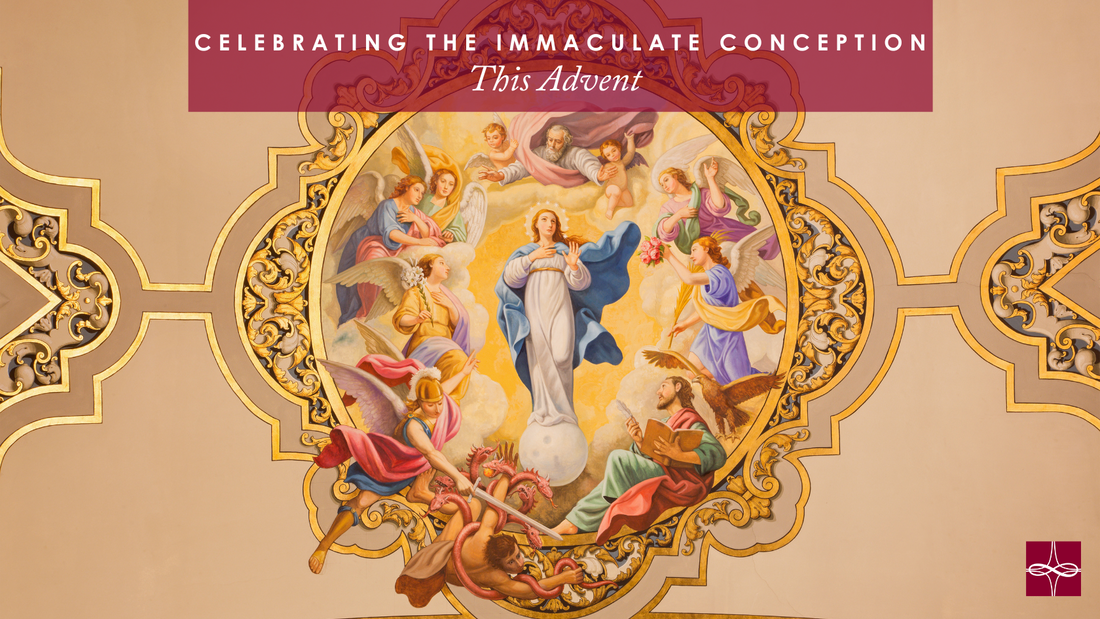


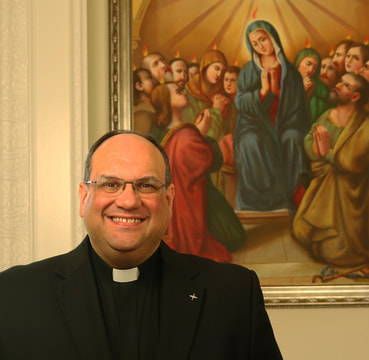
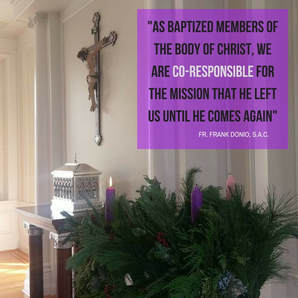
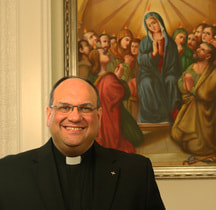
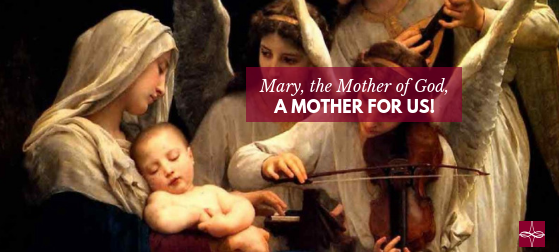

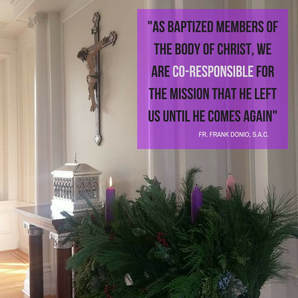
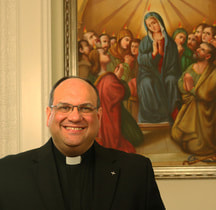

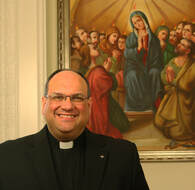
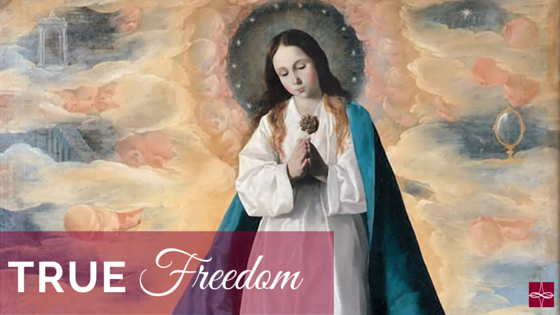
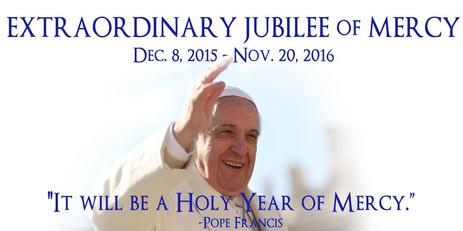

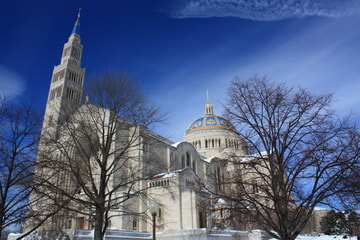
 RSS Feed
RSS Feed